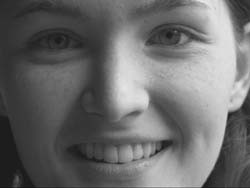
Eating disorders hard to swallow
I hated my guts. Actually, I hated more than my guts. There was no part of me that I liked, with the possible exception of my hair (which I cut short to spite myself). Name a body part and I had some critique of it. My breasts were too small or my feet too big. My knees were weird and my arms flabby. There was nothing I was happy with.
I was nine when I first went on a diet. It only lasted for three days because my willpower was less important to me than my appetite, but it was the start of a pattern of turning my body into a battleground that has persisted for years.
I started out at a more or less normal weight in grade school, but come junior high, as I began to sprout body parts that I didn’t have before, I took comfort in food. The more weight I put on, the more I went into hiding. I remember thinking on more than one occasion that I wanted to be big enough to be invisible. If I could have had a super power, that would have been it: I wanted to be able to disappear.
I reached a high weight of 250 pounds when I was fifteen, which gave me a body mass index of 38 and put me at extreme risk for developing health problems. I didn’t want to kill myself; I just felt like I should suffer, so I went almost overnight from bingeing (but never purging) to starving myself. I essentially stopped eating. On a good day, I might have eaten 150 calories; a bad day (or week) saw no food at all. It goes without saying that this was a shock to my system. Within a year, I had lost more than half my body weight and had to be hospitalized and put on a feeding tube to keep me alive. I was dying. My doctor gave me a week, maybe two, to live without treatment.
So I was left with a choice: Wrestle with my demons and live, or do nothing and die. I figured that it couldn’t get much worse than that, and it might even get better. Even though I was scared to death, I checked myself into an inpatient program and came out a little stronger, a little more confident, and a little more committed to living.
That was five years ago this fall. I think of that period in my life as the time when I began to come back to life. I don’t think of myself as “there yet,” wherever “there” is, but I’m well on my way. Food is not my enemy anymore, nor is it my best friend. When I have a bad day, I still have to consciously combat the message that not eating will make it better. But I am happy with myself. I like my body, and I am comfortable in it.
This Wednesday (March 30th) at 5 p.m. in the Umphrey Lee Ballroom, the Extreme Measures tour (www.noextrememeasures.org) will be highlighting the pressure women face to look beautiful, and what we can do about it. A tour like this has the potential to give us the information and resources we need to save a life. If one in 20 college women has an eating disorder, then everyone reading this article knows someone who is affected. I urge you all to come and be the change.









